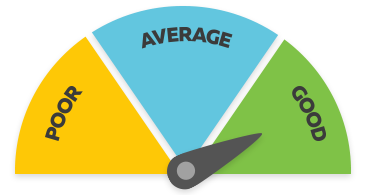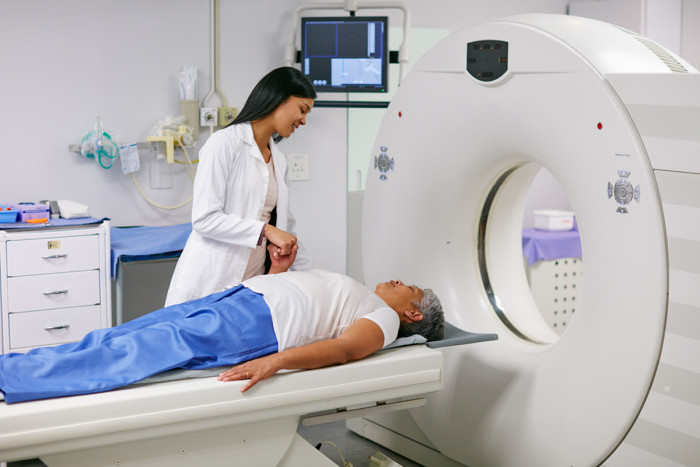Medical Imaging Technologist
Kairahurahu Whakaahua Whakaora
Alternative titles for this job
Medical imaging technologists use x-ray and other imaging equipment to take images of injuries and diseases.
Pay
Medical imaging technologists with one to six years’ experience usually earn
$63K-$84K per year
Medical imaging technologists with more than six years’ experience usually earn
$87K-$118K per year
Source: APEX and Te Whatu Ora, 2023.
Job opportunities
Pay
Medical imaging technologists pay
Pay for medical imaging technologists varies depending on experience and how many hours a week they work.
- Medical imaging technologists with one to six years' experience usually earn between $63,000 and $84,000 a year for a 40-hour week.
- Medical imaging technologists with more than six years' experience can earn between $87,000 and $118,000 a year.
Magnetic resonance imaging technologists and nuclear medicine technologists pay
Magnetic resonance imaging technologists and nuclear medicine technologists are specialist roles requiring extra training. Pay varies depending on experience and how many hours a week they work.
- Trainee magnetic resonance imaging technologists and trainee nuclear medicine technologists usually earn between $73,000 and $79,000 a year for a 40-hour week.
- Magnetic resonance imaging technologists and nuclear medicine technologists with one to six years' experience usually earn between $92,000 and $107,000 a year.
- Magnetic resonance imaging technologists and nuclear medicine technologists with more than six years' experience can earn between $110,000 and $120,000 a year.
Source: APEX and Te Whatu Ora Health NZ, 'Medical Imaging Technologists (MITs) Collective Agreement 1 September 2022 - 30 June 2024', 2023.
(This information is a guide only. Find out more about the sources of our pay information)
What you will do
Medical imaging technologists may do some or all of the following:
- provide information to patients about what will happen during their examinations
- prepare patients and equipment for examinations
- produce diagnostic images for diagnosis of injuries or possible diseases
- prepare and administer radioactive materials (tracers) or x-ray dye to patients
- check the quality of images taken
- write reports
- perform quality assurance testing on equipment.
Skills and knowledge
Medical imaging technologists need to have knowledge of:
- human anatomy, physiology and pathology
- positioning and imaging techniques, and how to use x-ray equipment
- safety issues for the use of radiation equipment and radioactive materials.
Working conditions
Medical imaging technologists:
- usually do shift work, which may include weekends and evenings
- may be on call, particularly in public hospitals
- work in hospitals, medical laboratories, private practices, and clinics.
What's the job really like?
Medical imaging technologist video
Sarah Christiansen talks about life as a medical imaging technologist
My job in a nutshell as a radiographer,
I basically take different types of x-rays all day.
. There's lots of different types of x-rays that we do.
Like the normal x-rays you do if you break your arm or have a chest infection.
We have ones on wheels that we take up to patients who are too unwell to come
down to where our big x-ray machines are.
And we also do x-rays in operating theaters as well. I'm going to a do a chest x-ray
on a toddler,
so I'm going to need the camera pointing sideways and a board at the end of the bed
to catch the x-ray when I take it.
"So just keep holding him still there for a tiny,
we bit longer while I check the picture and it's a lovely one."
"We're all done." So this is what the inside of an x-ray room looks like.
So there'll be a console,
so a computer that controls all the settings of the x-ray machine.
This is what an x-ray machine looks like. So it's got lots of different buttons.
Buttons here to change the shape of the light so that it matches what you want to
do. I can't take an x-ray of a real person [for this video]
but I could take an x-ray of some random objects. Here's a phone, a pen,
a pencil, see what they look like. There you go.
Loads of detail. And that's a pen and a pencil.
So you can see the metal shows up really bright,
but then the less dense bits don't show up quite so bright. So in terms of how
to become a radiographer, you do need to do the degree that's required,
which is a Bachelor of Health Science in Medical Imaging.
You get to work in the hospital as part of your degree. To pass your degree,
you need a certain amount of clinical hours.
There's lots of different types of imaging that you can get into once you've
done your x-ray degree. So you can do MRI scans,
so Magnetic Resonance Imaging,
you can do ultrasound scanning. Some things that are quite important is being
able to have empathy because you're taking care of people sometimes when they're
in a really bad way. And if you can't empathise
with that, then I think you're probably going to struggle.
I like a lot of things about my job.
I get variety in my hours so I can do day shifts and after-hours shifts as well.
There is actually quite a lot of creativity and problem solving involved.
If patients come in for a certain type of x-ray that you need at a certain angle
and they can't achieve that angle,
then you have to get a bit creative and make something up.
That's probably one of my favorite parts.
I have such an awesome team and they're so great to work with.
If you work with great people, that makes the job so much better.
Entry requirements
To become a medical imaging technologist you need to have one of the following degrees:
- Bachelor of Medical Imaging
- Bachelor of Applied Science (Medical Imaging Technology)
- Bachelor of Health Science (Medical Imaging).
You also need to be registered with the New Zealand Medical Radiation Technologists Board and hold an Annual Practising Certificate.
You may need to pass health and police checks, and attend an interview and an observation day to get into these courses.
- Ara website - information about the Bachelor of Medical Imaging
- UCOL website - information about the Bachelor of Applied Science (Medical Imaging Technology)
- Unitec website - information about the Bachelor of Health Science (Medical Imaging)
The Vulnerable Children Act 2014 means that if you have certain serious convictions, you can’t be employed in a role where you are responsible for, or work alone with, children.
Secondary education
NCEA Level 3 is required to enter tertiary training. Useful subjects include biology, chemistry, English, health education, maths and physics.
Additional requirements for specialist roles:
Magnetic Resonance Imaging Technologist
To become a Magnetic Resonance Imaging technologist you must complete the Postgraduate Diploma in Health Sciences (Magnetic Resonance Imaging) at the University of Auckland.
Mammography specialist
To become a mammography specialist you must complete a Postgraduate Certificate in Health Sciences (Mammography) from the University of Auckland.
Nuclear medicine technologist
To become a nuclear medicine technologist you must complete the Postgraduate Diploma in Health Sciences in Medical Imaging (Nuclear Medicine Pathway) at the University of Auckland.
Sonographer
To become a sonographer you must complete the Postgraduate Diploma in Health Sciences (Ultrasound) at the University of Auckland.
Personal requirements
Medical imaging technologists need to be:
- mature, responsible and patient
- accurate, with an eye for detail
- able to work well under pressure
- able to work independently and as part of a team
- able to follow instructions
- excellent communicators so they can relate well to patients and other staff
- good decision-makers
- competent with technology.
Medical imaging technologists must not be squeamish, as they may have to deal with people who have severe injuries.
Useful experience
Useful experience for medical imaging technologists includes:
- any work in the health sector
- photography
- technical work
- laboratory work
- any jobs involving contact with people.
Physical requirements
Medical imaging technologists need to be reasonably strong so they can move patients. They also need good hand-eye co-ordination for laboratory work and injections.
Registration
Medical imaging technologists need to be registered with the New Zealand Medical Radiation Technologists Board and have a current Annual Practising Certificate.
Find out more about training
- New Zealand Institute of Medical Radiation Technology (NZIMRT)
- (06) 752 7040 - nzimrt@nzimrt.co.nz - www.nzimrt.co.nz
- New Zealand Medical Radiation Technologists Board (MRTB)
- (04) 801 6250 - mrt@medsci.co.nz - www.mrtboard.org.nz
What are the chances of getting a job?
Strong demand for medical imaging technologists
Chances of getting a job as a medical imaging technologist are good because:
- an ageing population increases demand for more health checks and scans for age-related diseases
- a relatively low number of people train to do this job.
Medical imaging technologist, medical resonance imaging technologist, nuclear medicine technologist and sonographer appear on Immigration New Zealand's Green List. This means the Government is actively encouraging skilled workers in those roles from overseas to work in New Zealand.
According to the Census, 1,797 medical imaging technologists and sonographers worked in New Zealand in 2018.
Types of employers varied
Most medical imaging technologists are employed in:
- hospitals and nursing homes
- medical and dental services
- health clinics.
Sources
- Allen, K, registration coordinator, Medical Sciences Secretariat Limited for Medical Radiation Technologists Board and Medical Sciences Council, careers.govt.nz interview, February 2021.
- APEX and District Health Boards, ‘Medical Imaging Technologists Collective Agreement 1 November - 31 August 2022', accessed 2021, (www.hawkesbay.health.nz).
- Immigration New Zealand, Green List, April 2023, (www.immigration.govt.nz).
- New Zealand Institute of Medical Radiation Technology website, accessed January 2021, (https://nzimrt.co.nz).
- New Zealand Medical Radiation Technologists Board website, accessed January 2021, (www.mrtboard.org.nz).
- Stats NZ, '2018 Census Data', 2019.
(This information is a guide only. Find out more about the sources of our job opportunities information)
Progression and specialisations
Medical imaging technologists can progress into managerial roles. With further training, they may become academics. They may also move between areas of radiography if they are registered and hold a current Annual Practising Certificate covering that area.
Medical imaging technologists can specialise in a number of roles, including:
- Magnetic Resonance Imaging Technologist (MRI)
- Magnetic resonance imagers use MRI scanners, radio frequency waves, and magnetic fields to diagnose injuries and possible diseases.
- Mammography Specialist
- Mammography specialists use mammography scanners to take images of the breasts.
- Nuclear Medicine Technologist
- Nuclear medicine technologists use radioactive materials (tracers) and gamma cameras to diagnose and occasionally treat diseases.
- Sonographer
- Sonographers use ultrasound scanners and sound waves to take images of internal parts of the body.
Last updated 25 September 2023


